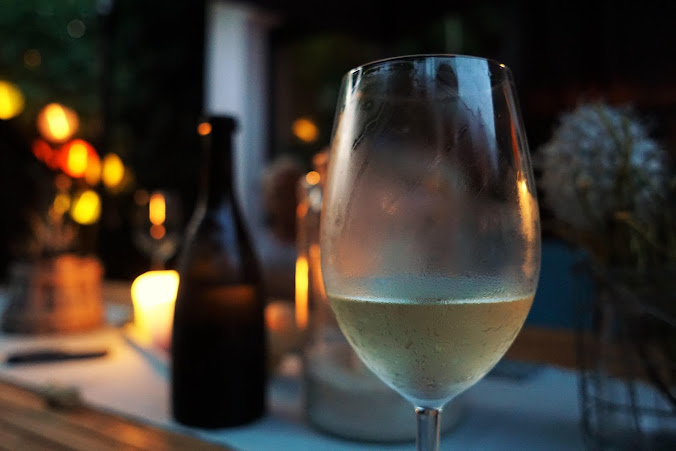Introduction
Wine is usually associated with rolling vineyards and temperate climates, but some winemakers take on the challenge of growing grapes in the most extreme conditions. Whether it’s the sun-scorched volcanic soils of Lanzarote or the icy river valleys of Mosel, wine adapts in fascinating ways to its environment. But how does climate shape wine styles? What are the advantages and struggles of producing wine in extreme heat or intense cold? If you’re curious about how nature influences your glass of wine, buckle up—this journey through the extremes will be an eye-opener.
1. Lanzarote, Canary Islands: Wine in a Land of Fire
Lanzarote’s wine story begins in the 1730s when volcanic eruptions blanketed the island in thick layers of ash. At first, it seemed like a disaster for agriculture, but local winemakers soon discovered that the volcanic soil retains moisture, making it possible to cultivate vines in an otherwise arid landscape. To protect the vines from strong winds and harsh sun, they are planted in deep pits known as “zocos”, each surrounded by a low rock wall. This innovative method gives Lanzarote’s vineyards a surreal, moon-like appearance while ensuring the grapes can survive the island’s harsh conditions.
When it comes to wines, Lanzarote is best known for Malvasía Volcánica, a fresh white wine bursting with tropical fruit flavors balanced by a distinct minerality from the volcanic soil. The island also produces Listán Negro, a red wine that is light-bodied yet slightly smoky, offering hints of spice. These wines reflect the island’s rugged terrain, delivering flavors unlike any others found in traditional European vineyards. The heat in Lanzarote helps the grapes ripen fully, creating bold, fruit-forward wines that are naturally expressive. However, the extreme dryness and limited rainfall mean that growing grapes requires careful nurturing, with water scarcity posing a challenge to sustainability. Additionally, high temperatures can reduce acidity levels, which can make the wines feel less refreshing unless well-managed.
2. Mosel, Germany: Elegance from the Ice
Mosel is a stark contrast to Lanzarote, known for its steep, winding vineyards along the banks of the Mosel River. Winemaking in this region dates back more than 2,000 years, originating with the Romans who recognized the potential of the river’s unique ability to reflect sunlight and provide additional warmth for grape ripening. The slopes here are some of the steepest in the world, requiring meticulous care from vineyard workers who navigate them to tend the vines. This challenging terrain, combined with the cold climate, results in wines that are known for their elegance and high acidity.
The region is famous for Riesling, an aromatic grape that thrives in the cold, producing wines with crisp acidity, delicate floral notes, and citrusy freshness. Mosel is also renowned for Eiswein (Ice Wine), an ultra-sweet dessert wine made from grapes left to freeze naturally on the vine, concentrating their sugars while preserving their bright acidity. Cold climates like Mosel slow grape ripening, allowing flavors to develop with more complexity. The river’s reflective properties and its ability to retain warmth provide an additional advantage, helping grapes reach optimal ripeness despite the challenging conditions. However, harsh winters can damage vines, leading to reduced yields, and the risk of under-ripeness can make wines overly tart if not carefully managed. Despite these challenges, Mosel’s wines are celebrated for their refined structure and ability to age gracefully.
Interactive Quiz: Are You More Lanzarote or Mosel?
Curious about which extreme wine region matches your taste? Answer these five quick questions to find out!
When choosing a wine, what’s most important to you? a) Bold, ripe fruit flavors with a touch of exotic flair. b) Crisp, refreshing acidity that keeps every sip lively.
Your ideal wine-drinking setting? a) Relaxing on a warm beach, feeling the sunshine. b) Cozying up in the evening with a beautifully chilled glass.
What’s your go-to type of wine? a) Aromatic whites with a tropical vibe or smoky reds. b) Bright, zesty whites with a touch of minerality and elegance.
How adventurous are you with unusual wine styles? a) Very! I’d love to try volcanic wines or desert-grown varieties. b) Somewhat! I like refined styles that express their terroir beautifully.
Do you enjoy sweeter wines? a) Not really, I prefer dry or lightly fruity wines. b) Absolutely! I love wines with natural sweetness and freshness.
Results:
Mostly A's: You’re all about Lanzarote! You love expressive, bold wines with unique volcanic minerality. Try Malvasía Volcánica or Listán Negro from Lanzarote.
Mostly B's: You’re a Mosel wine fan! You prefer crisp, refreshing acidity and elegantly balanced wines. Try Riesling or Eiswein from Mosel.
Wine Pairing Guide: What to Eat with Lanzarote & Mosel Wines?
Lanzarote Wines
Malvasía Volcánica (white wine): Pairs beautifully with grilled seafood, light Mediterranean dishes, and citrus-infused salads.
Listán Negro (red wine): Works well with smoky meats, mild cheeses, and Spanish tapas.
Mosel Wines
Riesling (dry or off-dry): Best with sushi, spicy Asian cuisine, and delicate white meats like chicken or turkey.
Eiswein (dessert wine): A dream pairing with cheesecake, apple tart, or blue cheese for an elegant contrast.
Conclusion: Which Style Suits You Best?
If you love wines with rich tropical flavors and a unique mineral edge, Lanzarote’s volcanic wines offer something truly distinctive. On the other hand, if you prefer crisp, fresh wines with bright acidity, Mosel’s elegant Rieslings and ice wines will likely appeal to you. Both regions showcase the magic of winemaking in extreme conditions, proving that nature’s challenges can lead to exceptional, unconventional wines. Whichever path you choose, every sip carries the story of its landscape, history, and the resilience of the winemakers who defy the odds to produce something extraordinary.
Would you like me to refine any sections further or add an interactive element to the post? A quiz or wine-pairing guide could make it even more engaging for new wine drinkers!



Comments
Post a Comment